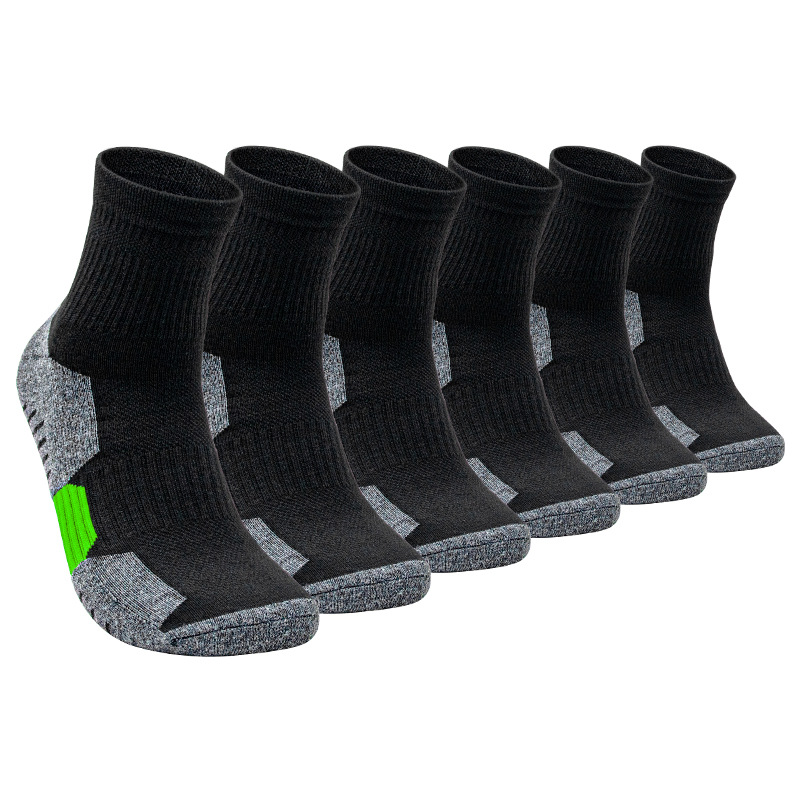Summary:
The choice of sock materials can significantly affect the fit and elasticity of the socks. Different materials possess ...
The choice of sock materials can significantly affect the fit and elasticity of the socks. Different materials possess distinct characteristics that influence how socks conform to the foot, provide stretch, and maintain their shape. Here's how sock materials can impact fit and elasticity:
Cotton:
Cotton socks are known for their softness and breathability, making them comfortable for everyday wear. However, pure cotton socks tend to have limited elasticity and may lose their shape over time. To improve elasticity, cotton is often blended with synthetic fibers like elastane (spandex) or nylon, which enhances stretch and helps the socks retain their shape.
Wool: Wool socks can provide a snug and comfortable fit due to their natural elasticity. Merino wool, in particular, is known for its elasticity and ability to stretch without losing shape. Wool socks offer a gentle compression fit that conforms to the foot's contours, making them suitable for various activities and foot shapes.
Synthetic Fibers (e.g., Polyester, Nylon): Synthetic fibers like polyester and nylon are known for their excellent elasticity and shape retention. When used in sock construction, they provide a stretchy and form-fitting feel. These materials are often used in athletic and performance socks to ensure a secure fit during high-intensity activities.
Spandex (Elastane/Lycra): Spandex is a synthetic fiber specifically designed for elasticity and stretch. It is commonly blended with other sock materials to provide a high level of stretch and shape recovery. Socks with spandex content offer excellent elasticity, making them suitable for athletic, compression, and snug-fitting styles.
Bamboo: Bamboo socks typically have a gentle stretch and conform well to the foot. While they may not have the same level of elasticity as some synthetic or wool-blend socks, they provide a comfortable and slightly stretchy fit.
Silk: Silk socks are known for their smooth and luxurious feel but tend to have less elasticity compared to some other materials. They may offer a snug fit but can be less stretchy than cotton or synthetic options.
Blends: Many socks are made from material blends to combine the desirable characteristics of multiple fibers. For example, a cotton-polyester blend can offer the softness of cotton with the added elasticity and shape retention of polyester.
Compression Socks: Compression socks are designed with specific materials and knitting techniques to provide graduated compression for medical or performance purposes. These socks are engineered to deliver controlled pressure to improve circulation and reduce swelling. They have a high degree of elasticity to achieve the desired compression effect.
When choosing socks, consider your comfort preferences, activity level, and any specific needs. Socks with a higher percentage of elastic fibers like spandex or nylon will generally offer better elasticity and snugness, while natural fibers like cotton and wool can provide a softer feel but may benefit from blended materials to improve stretch and shape retention. The choice of material should align with your intended use and comfort requirements.


